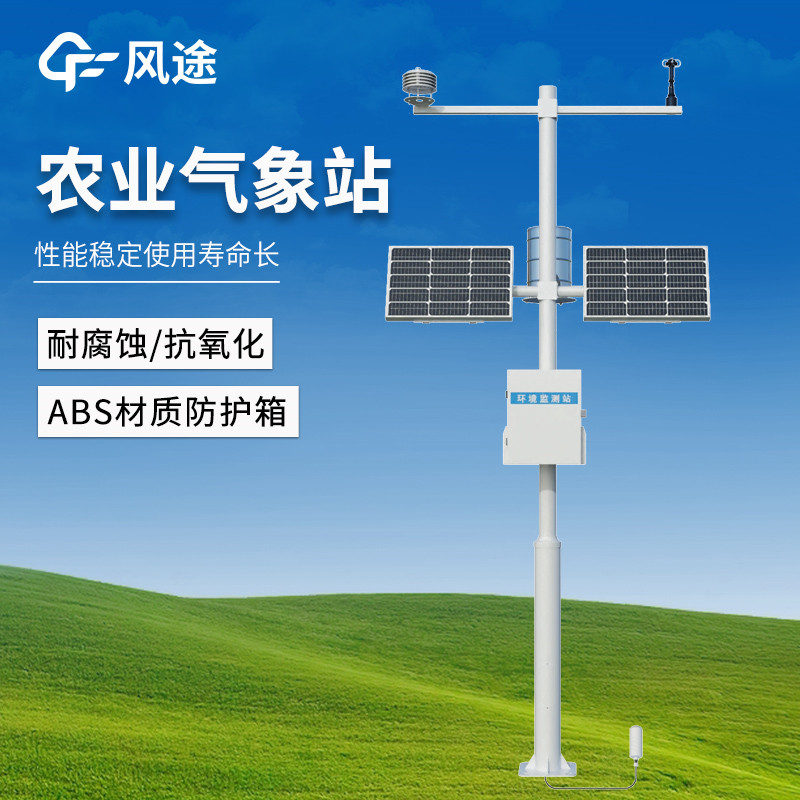Tianyi Sensor IOT Technology Co., Ltd
Sales Manager:Ms. Emily Wang
Cel,Whatsapp,Wechat:+86 15898932201
Email:info@fengtutec.com
Add:No. 155 Optoelectronic Industry Accelerator, Gaoxin District, Weifang, Shandong, China

Sales Manager:Ms. Emily Wang
Cel,Whatsapp,Wechat:+86 15898932201
Email:info@fengtutec.com
Add:No. 155 Optoelectronic Industry Accelerator, Gaoxin District, Weifang, Shandong, China
time:2025-06-16 08:53:28 source:Weather Station viewed:198 time
Weather conditions have always been a key factor affecting crop growth and harvest. Alas! Frequent meteorological disasters have brought great crises to agriculture!
Drought, a common meteorological disaster, results from prolonged precipitation scarcity, leading to soil water shortage and dry air. Crops struggle to grow normally due to water deficit, and in severe cases, even face total crop failure.
Flooding, caused by concentrated or prolonged rainfall, leads to farmland waterlogging. This deprives crop roots of oxygen, hinders growth, and may trigger the spread of diseases.
Frost, when it strikes suddenly, can freeze and even kill crops, particularly causing severe damage to cash crops like fruits, vegetables, and flowers.
There are also dry hot winds, hailstones...
A series of meteorological disasters frequently afflict agriculture, causing huge losses.
In the face of these threats, precise meteorological monitoring is needed. Through real-time and accurate monitoring of meteorological elements, we can predict the approaching disasters in advance, providing precious response time for agricultural production. Of course, meteorological monitoring not only helps prevent disasters but also provides a scientific basis for daily agricultural management, such as arranging irrigation and fertilization timing based on temperature, humidity, and other data.
Among a range of meteorological monitoring methods, the demand for fine-grained meteorological monitoring in local areas has given rise to the Agricultural Environment Monitoring System. This system comprehensively applies modern sensor technology, IoT communication technology, and data processing technology to fully and real-timely monitor various meteorological elements in the agricultural production environment.
Next, let's take a detailed look.
The Agricultural Environment Monitoring System is composed of multiple instruments. First are the meteorological sensors, which are responsible for collecting meteorological data. For example:
Temperature sensors accurately measure air temperature or soil temperature.
Humidity sensors real-timely monitor air humidity or soil moisture.
Wind speed and direction sensors measure wind speed and direction.
Rainfall sensors accurately measure precipitation.
There are also light sensors, carbon dioxide sensors...
In short, thanks to these sensors, the system can comprehensively collect meteorological parameters affecting crop growth.
Then there is the data collector, which acts as the "transfer station" of the system. It is responsible for collecting various data from the sensors, carrying out preliminary processing and storage. Subsequently, with the help of wireless transmission modules, such as 4G, 3G, or other communication technologies, the data is quickly and stably transmitted to the data processing center. This wireless transmission method breaks free from the restraints of cables, making the installation and deployment of the system more convenient, especially suitable for large-area farmland or remote areas.
Next is the indispensable part: the power supply system. It provides energy support for the entire monitoring system. A common solar power supply system consists of solar panels, storage batteries, and controllers. During the day, solar panels convert solar energy into electrical energy, part of which is used by the system immediately, and the excess is stored in the batteries. At night or on cloudy days, the batteries release electrical energy to maintain the operation of the system, ensuring continuous monitoring.
Finally, users can access the supporting cloud platform or application program of the system through smart terminals such as mobile phones, tablets, or computers to view real-time meteorological data anytime, anywhere. The cloud platform has the capability of data processing and analysis, which can deeply mine the collected data, generate meteorological change trend charts, disaster early warning information, etc., and present them to users in an intuitive form. When the monitored data exceeds the suitable growth range of crops, the system will automatically issue a warning to remind farmers to take timely countermeasures. For example:
In case of a frost warning, protective measures such as smoking or covering can be taken in advance.
In the face of a drought warning, the irrigation plan can be adjusted in a timely manner.
At present, the Agricultural Environment Monitoring System has been widely applied in protected agriculture and field agriculture. Through precise monitoring of the meteorological environment in farmland, it can automatically regulate equipment such as ventilation, sunshade, and humidification to create the most suitable microclimate environment for crop growth, improving crop yield and quality. It can also help farmers reasonably plan agricultural activities, such as determining the best sowing, fertilization, and harvesting times based on meteorological data, realizing precision agricultural management, reducing production costs, and improving agricultural production efficiency.

In the road structure system, from top to bottom are the surface course (with a thickness of about 15 centimeters), the base course (with a thickness of about 30 centimeters), the cushion course (with a thickness of about 25 centimeters), and the subgrade. The highway subgrade can encounter problems...
Why Does Wind Power Generation Easily Encounter Icing Issues?First, wind farms are mostly located in areas with abundant wind resources such as mountains and coastal regions, where harsh climatic conditions (high humidity, low temperatures) easily lead to weather phenomena like clouds, fog, and free...
Microwaves refer to electromagnetic waves with frequencies ranging from 300MHz to 300GHz and wavelengths from 1 millimeter to 1 meter. Due to their high frequency and short wavelength, they have strong directivity and penetrating power, enabling stable propagation under different meteorological cond...
A Portable Weather Station is a highly integrated automatic field meteorological data collection and transmission device. Essentially, it is a fully functional mobile observation platform capable of rapidly establishing temporary meteorological observation points in areas not covered by conventional...